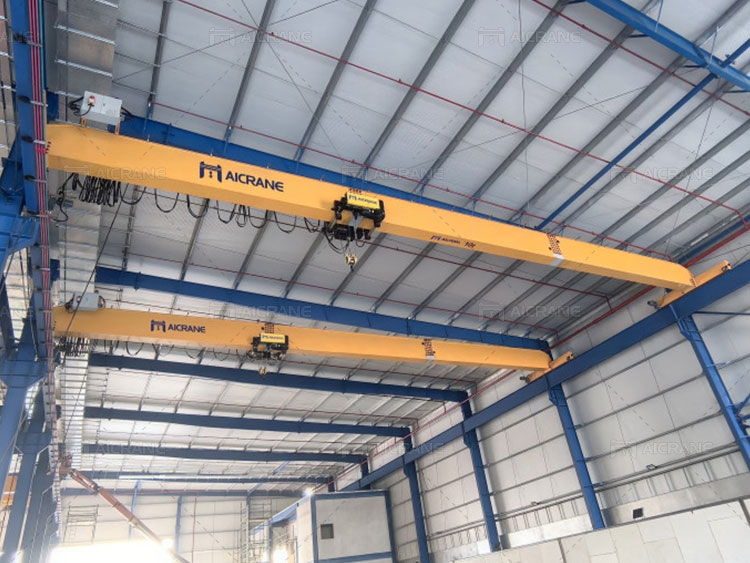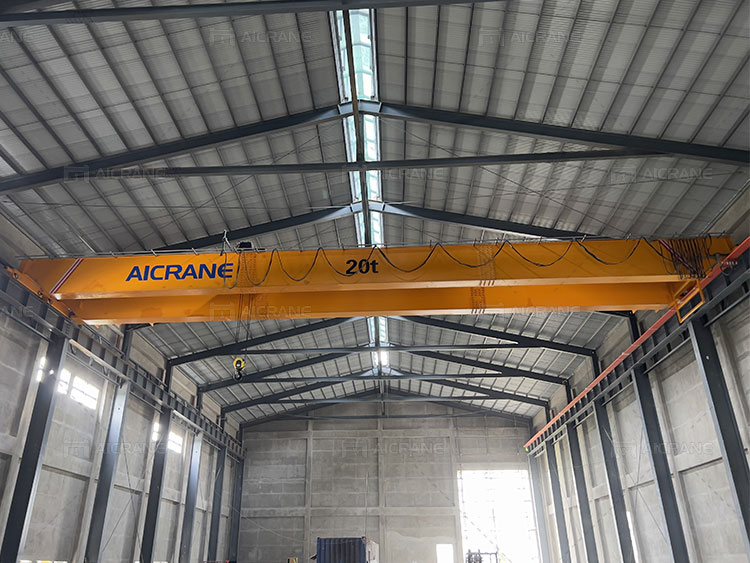Overhead cranes are indispensable in industrial settings where heavy materials must be moved quickly, efficiently, and safely. Whether in manufacturing plants, warehouses, steel mills, or shipyards, choosing the right type of crane can significantly influence operational efficiency, safety, and overall productivity. Among the most commonly used overhead cranes are single girder and double girder designs. While several factors come into play when choosing between the two—such as budget, crane span, lifting height, and frequency of use—capacity is often the decisive factor.
This article explores the key differences between double girder and single girder overhead cranes, with a particular focus on how load capacity influences decision-making. We will also cover the practical applications of each type, cost considerations, structural differences, and guidance on when to choose one over the other.

Understanding Single Girder and Double Girder Cranes
Single Girder Overhead Cranes
An overhead crane single girder consists of a single bridge beam supported by two end trucks. The hoist travels on the bottom flange of the bridge girder, known as an underrunning or top-running configuration, depending on the application. This design is straightforward, cost-effective, and easier to install and maintain.
Key Characteristics:
-
Load capacity typically up to 20 tons
-
Simple structure with lower material and production costs
-
Lighter overall weight, requiring less supporting structure
-
Ideal for light to medium-duty applications
Double Girder Overhead Cranes
A double girder crane uses two bridge girders running parallel between the end trucks. The hoist and trolley run on top of the bridge girders, allowing for higher lifting capacity and lifting height. These cranes are suitable for heavy-duty operations and are more robust than single girder systems.
Key Characteristics:
-
Load capacity from 10 tons up to 500+ tons
-
High durability and better structural stability
-
Higher lifting height due to hoist position on top of girders
-
Suited for heavy-duty and continuous operations

Why Capacity Matters
In industrial material handling, load capacity refers to the maximum weight a crane can lift safely. When selecting an overhead crane for sale, underestimating capacity needs can result in unsafe conditions, mechanical failures, and costly downtime. Overestimating capacity, on the other hand, may lead to unnecessary capital investment.
As a general rule:
-
Single girder cranes are suitable for lifting loads up to 15–20 tons.
-
Double girder cranes are recommended when lifting loads above 20 tons, or when frequent heavy lifting is required.
The reason capacity is so critical lies in the structural integrity and mechanical limitations of each crane type. A double girder crane distributes weight more evenly and supports greater loads through reinforced structural elements. The presence of two bridge girders also allows for greater hoist stability and load control, especially for long or bulky items.
Structural and Performance Differences Based on Capacity
Load Distribution and Stability
As the load capacity increases, so does the importance of stability and distribution of force. Double girder cranes excel in these areas due to their dual-beam construction. With the hoist riding on top of the girders, the crane can handle centralized and off-center loads more efficiently than a single girder system.
Lifting Height
In higher-capacity applications, lifting height often becomes a constraint. Since the hoist on an eot crane double girder rides on top of the girders, it can lift the load closer to the ceiling, providing greater vertical clearance. This is essential in facilities where every inch counts, such as shipyards, power plants, and assembly areas.
Single girder cranes have the hoist beneath the girder, which slightly reduces the vertical lifting height and makes them less suitable for operations that require lifting items to significant heights.
Crane Span and Runway Design
Higher-capacity cranes usually need wider spans and longer runways, which are better supported by the double girder design. Double girders provide added strength for spanning longer distances without excessive deflection.
Cost Considerations
When capacity is the deciding factor, it’s important to weigh the long-term operational costs against the initial investment.
-
Single girder cranes have a lower upfront cost due to less steel usage, simpler hoist designs, and reduced manufacturing time. However, they are limited in terms of lifting capacity and may not offer the durability required for continuous heavy use.
-
Double girder cranes require a higher initial investment but offer superior strength, longer service life, and greater flexibility. For operations involving heavy or oversized loads, the investment often pays off over time in reduced maintenance, downtime, and increased productivity.
Application Scenarios
When to Use Single Girder Cranes
-
Light manufacturing and assembly lines
-
Warehouses and workshops with limited headroom
-
Applications where lifting rarely exceeds 10–15 tons
-
Projects where budget constraints are a primary concern
When to Use Double Girder Cranes
-
Steel and metal production facilities
-
Power generation plants
-
Precast concrete manufacturing
-
Heavy machinery assembly lines
-
Applications requiring over 20-ton lifting capacity and higher duty cycles
Safety and Compliance
Heavier loads increase the risk of accidents, making safety a primary concern in crane selection. Double girder cranes often come with more robust safety features, including:
-
Redundant braking systems
-
Anti-sway technology
-
Load monitoring and overload protection
-
Emergency stop controls
In addition, compliance with industry standards such as FEM, ISO, and CMAA is easier to meet with double girder configurations for higher capacities. Choosing a crane that is structurally engineered for the intended load capacity ensures long-term reliability and adherence to safety regulations.
Customization and Future Expansion
Choosing a crane based on capacity should also consider future operational needs. Double girder cranes offer more flexibility for future upgrades, such as:
-
Adding walkways for maintenance
-
Attaching auxiliary hoists
-
Increasing lifting height or travel speed
These options are generally not feasible or cost-effective with single girder cranes. If your business anticipates growth in load requirements, a double girder solution may be a more future-proof investment.
Conclusion
When capacity is the decisive factor in selecting an overhead crane, the choice between single girder and double girder becomes clear. For operations requiring capacities above 20 tons, or where lifting is frequent and mission-critical, double girder cranes provide the necessary strength, stability, and flexibility. Although single girder cranes are more economical and sufficient for lighter applications, they fall short when it comes to handling heavy or oversized loads.
Ultimately, understanding your current and future lifting requirements—and balancing them against budget, safety, and facility constraints—will help determine the most appropriate crane system. For high-capacity operations where reliability and efficiency are paramount, double girder cranes are the superior solution.